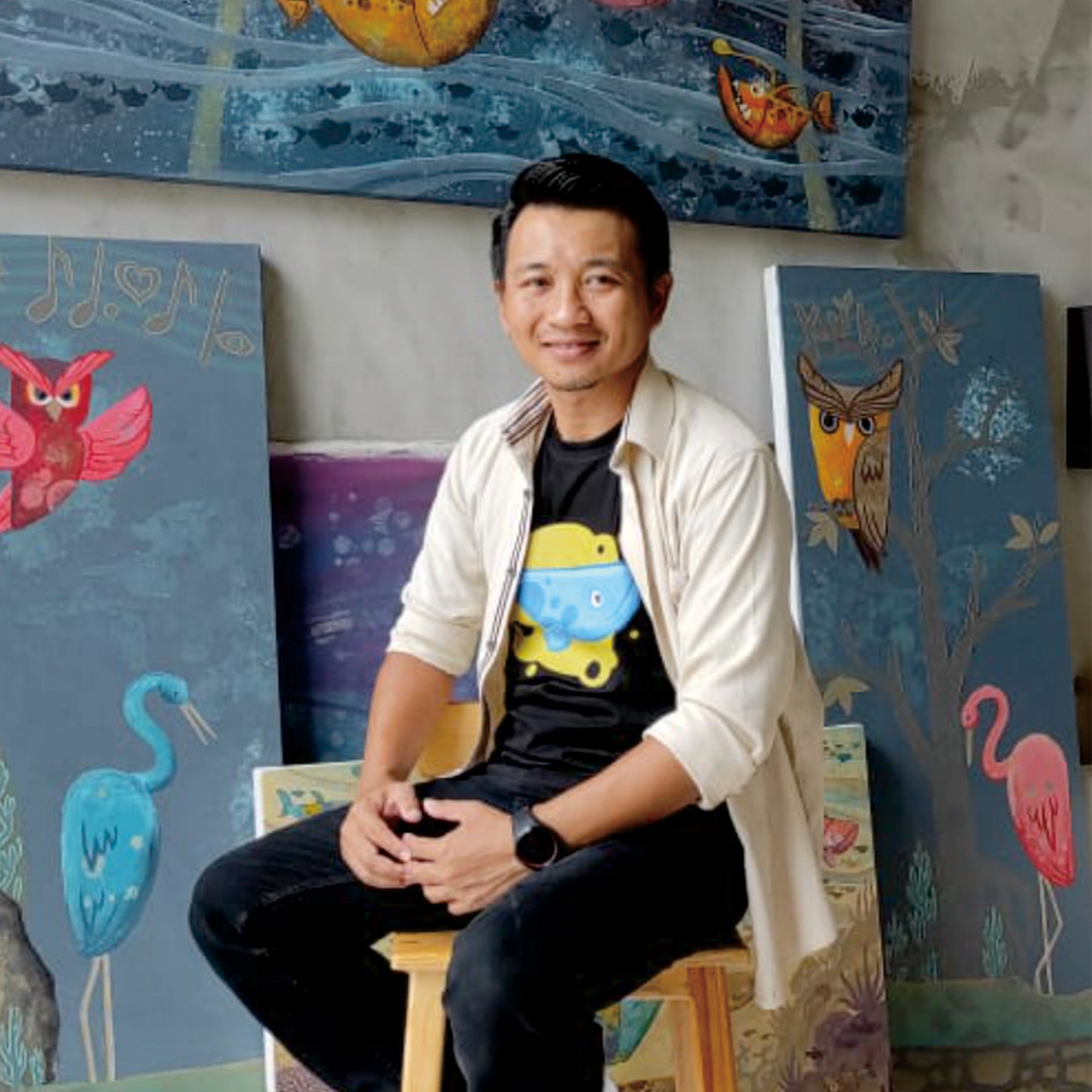
M. Medik
I was born in the mountains of Prigen, East Java, and now live on the coast of Pasuruan. These two landscapes—quiet peaks and restless seas—shaped my artistic journey. The ocean, fish, and maritime life are central to my works, not only as subjects but as metaphors for existence, hope, and balance with nature. Influenced by my mother’s drawings, the romanticism of Raden Saleh, and the freedom of Jackson Pollock, I create art that bridges tradition and modernity.
My practice combines aquarelle’s flowing softness with sungging, a meticulous Javanese technique, to form a visual language that is both contemporary and culturally rooted. Nature is my studio; observing the coast and its life deepens my sensitivity and fuels my expression. For me, success is when my art can move others, spark reflection, and become a dialogue between inner honesty and universal meaning. My dream is to create large-scale works and exhibit them globally, while continuing to speak for the beauty and fragility of the coast.
M. Medik
RETURN TO TOP






